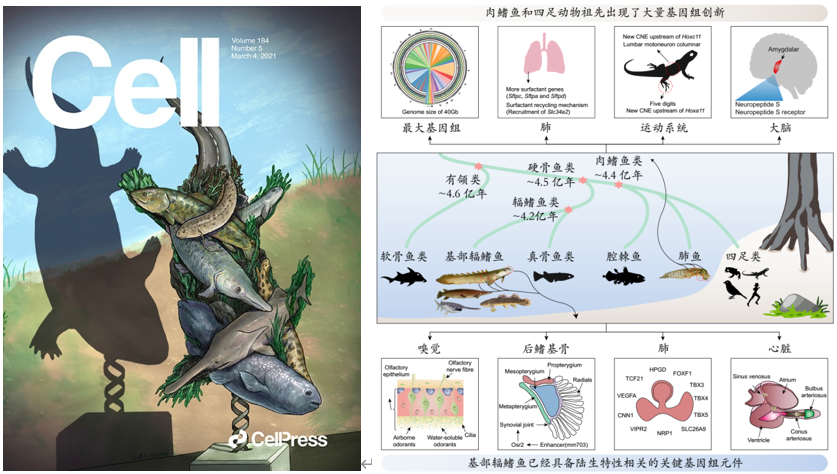
Newsroom
IHB Achievement Selected as Top 10 Advances in China’s Life Sciences in 2021

- Genetic innovation mechanisms of vertebrate evolution from aquatic to terrestrial.
The transition from aquatic to terrestrial vertebrates more than 400 million years ago was a major event in the evolutionary history of terrestrial vertebrates, including humans, but the genetic innovation mechanism of this major event has been poorly understood for a long time.
The teams of HE Shunping from the Institute of Hydrobiology, Chinese Academy of Sciences, in collaboration with the team of WANG Wen and WANG Kun from the School of Ecology and Environment, Northwestern Polytechnical University, and ZHANG Guojie from the Kunming Institute of Zoology, found that the ancestors of teleost fish have evolved the preliminary genetic basis for terrestrial adaptation. The interior of the representative meat-finned fish was further strengthened until the quadruped was finally perfected and successfully landed on land.
Science reported that the achievement revealed "the genetic mystery of the evolution from aquatic to terrestrial hidden in extant fish"; Professor Per Alhberg, academician of the Swedish Academy of Sciences, wrote that the achievement overcomes the challenges of fossil research to study soft tissue organs and physiological problems; the United States Neil Shubin, an academician of the Academy of Sciences and an internationally renowned vertebrate land-based research expert, wrote in an article that the results "provide key cognition and long-awaited data" for understanding vertebrate aquatic to terrestrial research.
Two research papers on this achievement were published as cover stories in the journal Cell.